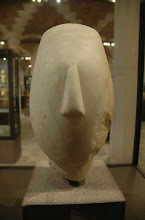 Scientists have discovered more than 1,000 species in Southeast Asia's Greater Mekong region in the past decade, including a spider as big as a dinner plate, the World Wildlife Fund said Monday.
Scientists have discovered more than 1,000 species in Southeast Asia's Greater Mekong region in the past decade, including a spider as big as a dinner plate, the World Wildlife Fund said Monday.A rat thought to have become extinct 11 million years ago and a cyanide-laced, shocking pink millipede were among creatures found in what the group called a "biological treasure trove".
The species were all found in the rainforests and wetlands along the Mekong River, which flows through Cambodia, Laos, Myanmar, Thailand, Vietnam and the southern Chinese province of Yunnan.
"It doesn't get any better than this," Stuart Chapman, director of WWF's Greater Mekong Programme, was quoted as saying in a statement by the group.
From BBC: Dragon millipede (Image: Somsar Panha)
The "dragon millipede" (Desmoxytes purpurosea) was first described in 2007 by scientists in Thailand. Researchers suggest the bright colouring acts as a warning to would-be predators, as the millipede has glands that produce cyanide as a defence mechanism.
Conservation group WWF says that more than 1,000 species new to science have been recorded in South-East Asia's Greater Mekong region over the past decade. These include 22 snake species, including this green pitviper (Trimeresurus gumprechti).
The Laotian rock rat (Laonastes aenigmamus) was first recorded by scientists at a food market in Laos. Remarkably, researchers say this species is the sole survivor of an ancient group of rodents understood to have died out 11 million years ago.
http://www.huffingtonpost.com/2008/12/15/gumbrechts-green-pit-vipe_n_151114.html







No comments:
Post a Comment